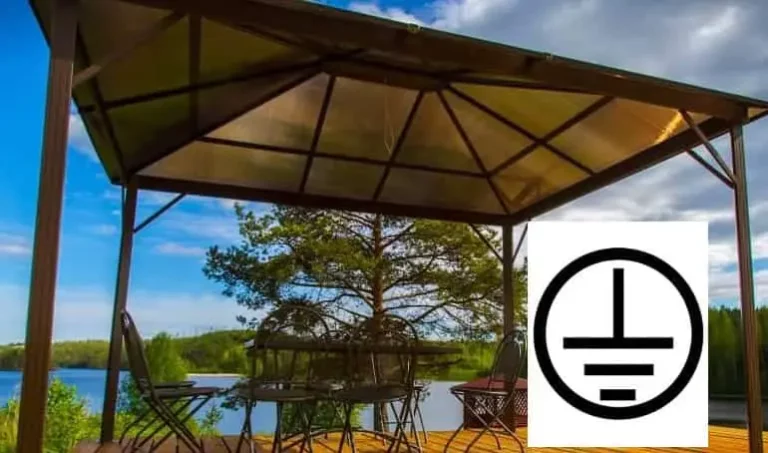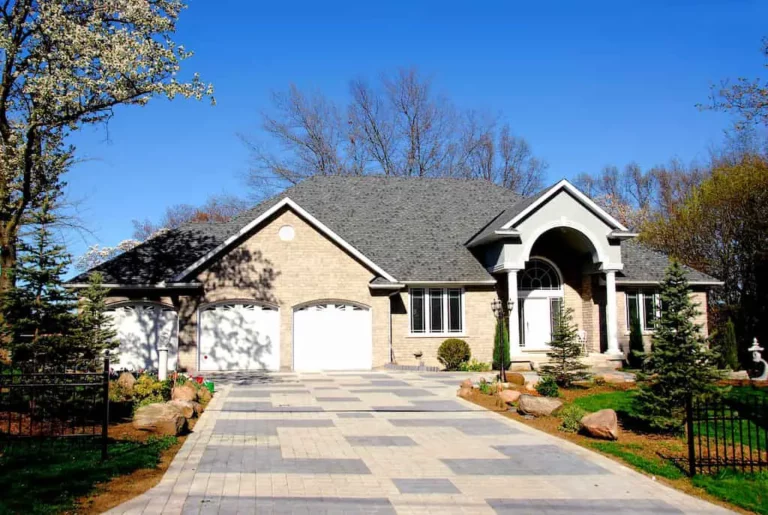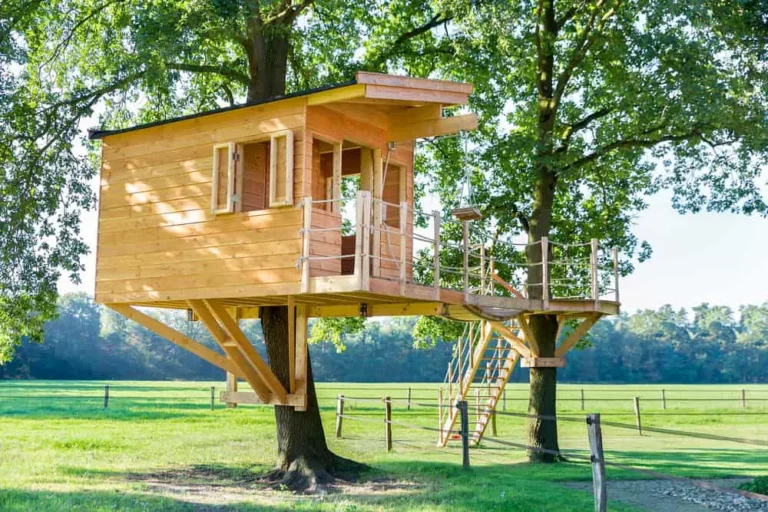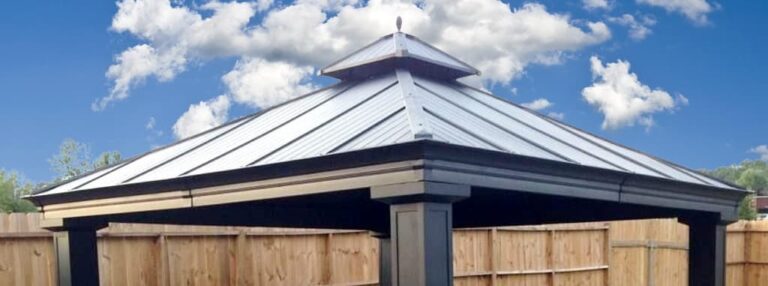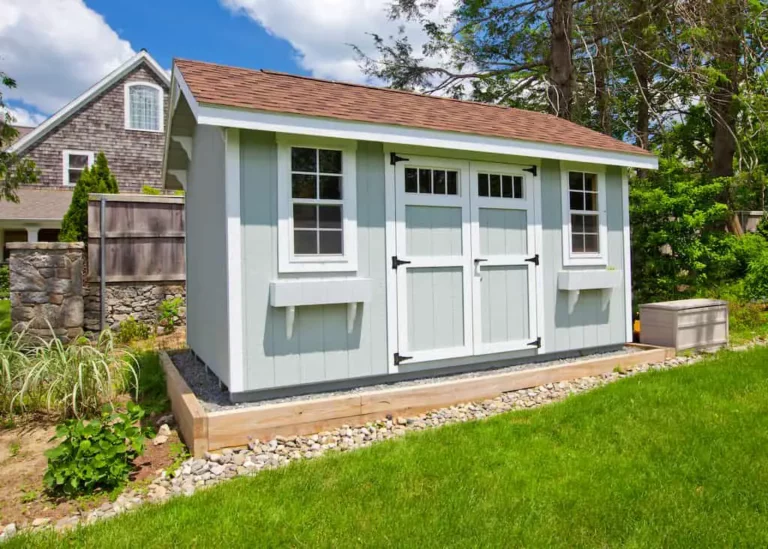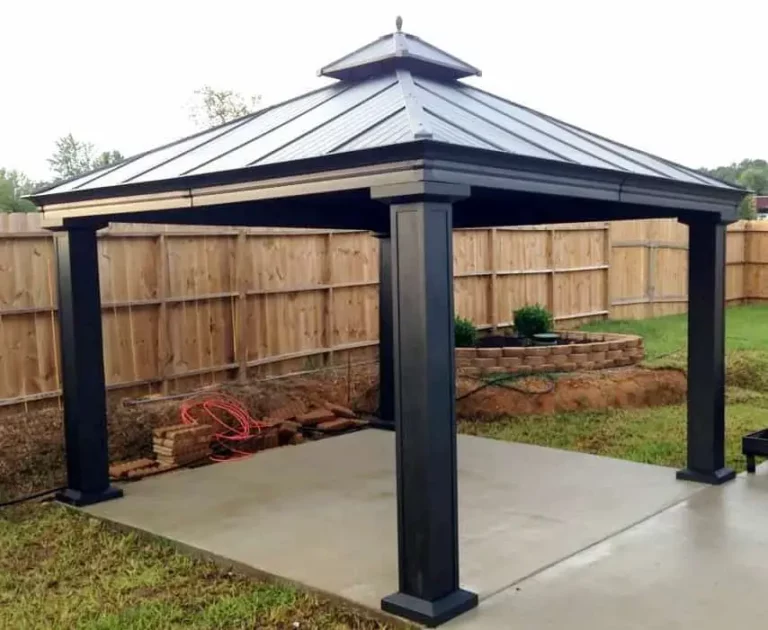How Do You Stabilize A Wobbly Pergola?
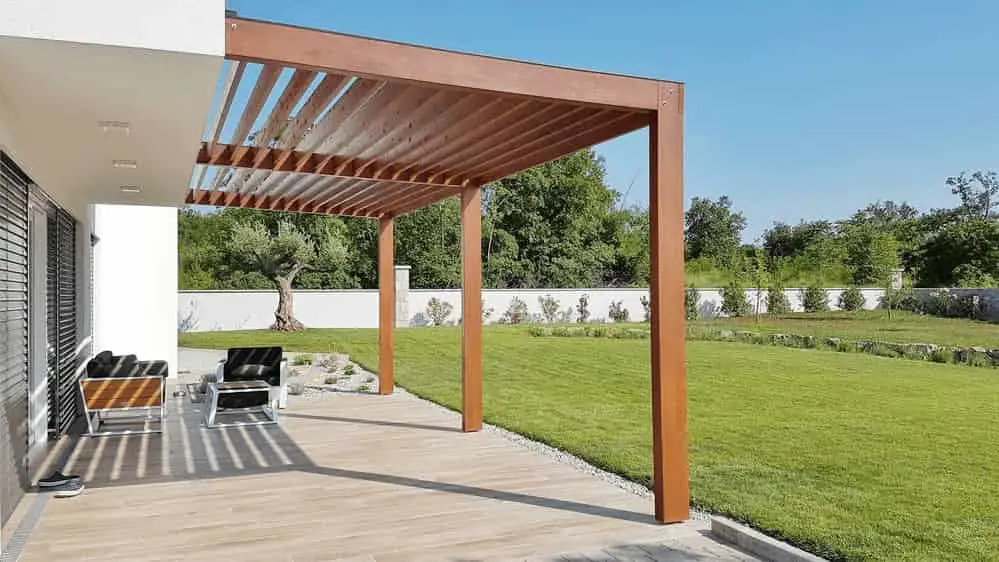
Pergolas are beautiful installations. The only problem is that to make a pergola look its best, it should have the most minimal design possible, which usually means a lack of structural supports, resulting in a slightly wobbly structure. What do you do if you have a wobbly pergola and want to make it more secure without compromising its looks?
To stabilize a pergola, reinforce the structure with supports between the posts and beams, replace the joint brackets with stronger hardware, and anchor the pergola securely. Screw piles, mason screws, concrete anchors, and heavy-duty bolts anchor a pergola well, depending on where it is installed.
There are several ways to stabilize a wobbly pergola; all it takes is a little knowledge. Pergolas do not need to be unstable, so let’s learn the best ways to stabilize a structure like this and keep it looking as good as possible.
How Do You Secure A Pergola Without Concrete?
Pergolas are beautiful installations, but they are notorious for being unstable. If you want to install a pergola, or if you are in the process of installing one and want to keep it stable without using any concrete, what are your options?
Concrete is an excellent way to stabilize a pergola, but it is permanent, causes soil damage, is challenging to use well for this purpose, and ruins lawns, plants, and your patio if the gazebo is installed upon it.
If you do not want to deal with these issues, several other methods exist for stabilizing a pergola without concrete.
The best way to stabilize a pergola without concrete is to use a screw pile.
A screw pile is a stabilizing pile designed to be drilled into the ground by a large, broad screw section. These piles are hollow steel tubes with pointed ends that are screwed into the ground and become immensely stable when buried deep.
Screw piles are usually sunk into the ground their entire length, exposing a small plate at ground level. This plate has bolt holes that allow the pergola to be bolted into the screw pile.
Good screw piles can be drilled several feet into the ground, making them stable in even the loosest soil. The pergola is bolted to the top of the screw pile and will not be moved by weather.
Another benefit of using screw piles to stabilize and anchor your pergola is that this solution is not permanent, as the pergola can be removed from the screw piles, and the screw piles can be moved or reused.
Other methods of securing a pergola without concrete are to dig the legs of the pergola into the ground and cover them with sand, use sandbags to weigh down and support the legs of the structure, or use stakes to secure the feet of the pergola into the ground.
How Do You Anchor A Pergola To Pavers?
Anchoring a pergola to pavers can be challenging and daunting if you do not know the right methods. The good news is that several options work very well for anchoring and stabilizing a pergola installed on pavers.
The most permanent way to anchor a pergola to pavers is to anchor the pergola posts into the pavers using masonry screws or concrete anchors.
These anchors or screws expand inside the paver, keeping the pergola fixed very well.
Simply mark the points in the pavers where you want to anchor the pergola posts and drill holes into the pavers with a masonry drill. Place the pergola over the holes and drill the screws into the anchor points through the pergola mounting holes.
This method will keep a pergola mounted firmly in pavers without any fear of it wobbling or being moved at all.
Another good option that is much less permanent is to use concrete weights to keep the pergola in place on the pavers. A popular method for this is to use large planters or steel containers.
Position the pergola where you want it to stay, then place each leg post of the pergola into steel planters or containers. Fill the bottom of the planters or containers with concrete for each leg post. This will form a weight on each post and keep the pergola in place.
The planters can then be filled to the top with soil and used for planting flowers or succulents or fill them with decorations instead.
This is a sturdy option that can be removed, if necessary, without causing any damage to the pavers. It can also add a stylistic flair to the plain posts of the pergola.
A common method professional contractors use to secure pergolas is heavy concrete anchors to weigh down the legs and keep the pergola in place. The concrete adds substantial weight to the legs of the pergola and should keep it stable and in place.
How Do You Stabilize A Pergola On A Deck?
Stabilizing a pergola on a deck is among the more challenging problems that a person can face with a pergola. There are a few methods that work well, but it does take some careful thought.
The best way to stabilize a pergola on a deck is to stabilize the structure using more robust supports and better joints. Improving the stability of the structure itself will go a long way to making it more stable overall.
A pergola can also be stabilized by adding supports and stabilizers attached to the deck’s joists. Never attach the pergola directly to the deck boards, but it is safe to attach it to the deck joists, so long as the joists can support the weight of the structure.
It is also possible to stabilize a pergola on a deck by making holes in the deck for the pergola legs to be built through and anchored into the ground with concrete. However, this is a very difficult task that can compromise the deck’s structural integrity.
If you opt for the ground concrete anchor method, it is always best to have a professional or a skilled craftsman assist with the modifications to ensure that the deck is not harmed or destabilized.
Another option is to use the deck railings to stabilize the pergola by adding stabilizers between the railings and the pergola. This option works best if the railing is firmly attached and the pergola is not too heavy.
Can A Pergola Go On Grass?
Pergolas are not always attached to buildings, and they can make an excellent addition to a large lawn to provide some shade and style. However, pergolas can be challenging to secure and stabilize, which leaves some DIYers wondering if you can put a pergola on grass.
A pergola can go on grass, but there are a few considerations to ensure that the pergola remains stable and upright and does not succumb to damage and rot.
Placing a wooden pergola directly onto grass will make the structure unstable, and the moisture from the ground will eventually cause rot and damage to the pergola.
However, if a pergola is anchored correctly into the ground, it can go on grass, and if it is made from the right materials, it will not be damaged easily by damp.
A metal-frame pergola is the best option for placing it on grass, as it will not rot in the wet grass or damp ground.
The pergola should also be anchored into the ground with screw piles, dug deep, anchored with concrete, or weighed down with concrete.
Screw piles are the best way to keep a pergola of any kind secure on grass. The next best option that does not cause much damage is to weigh down the pergola by mounting the pergola legs in planters, boxes, or buckets filled with concrete.
If a pergola is left on the grass without mounting mechanisms, it will not stay upright or stable for long.
Any pergola on grass should be equipped with broad feet to prevent it from sinking into the ground, and it should always be installed in an area with some sunlight during the day to help dry it out before damp causes rust or rot.
Can Pergolas Withstand High Winds?
Pergolas are notoriously unstable when they are not reinforced well or stabilized, but another concern regarding this type of structure is how well they withstand high winds. Is it possible to keep a pergola upright and stable, even when the winds get rough?
If your pergola is anchored and supported well, it should withstand high winds within reason. Some winds take down full brick structures, but a well-made pergola can withstand normal winds from large storms.
Pergolas do not usually have a closed roof and are usually very open structures. These features stand in favor of pergolas, as there is less for the wind to catch to move the structure.
High winds should not move it from its place if your pergola is anchored well using concrete, screw piles, or bolts.
However, it is critical to ensure that your pergola’s anchors and mounting points are maintained well and regularly inspected for damage or wear and tear. In this case, they should be replaced to ensure that the structure will withstand high winds and storms.
Read my article The Ultimate Guide To Choose And Install A Gazebo and pergola for more information
Conclusion
Wobbly pergolas can be stabilized in various ways, depending on the construction of the pergola and the location it stands in. Sometimes all it takes to stabilize a wobbly pergola is to install new supports within its structure, and sometimes it requires new anchor points into the ground.
Take your time to consider the options, and the solution for your wobbly pergola will become apparent, but remember that it is important to stabilize a pergola well before it becomes a hazard.
